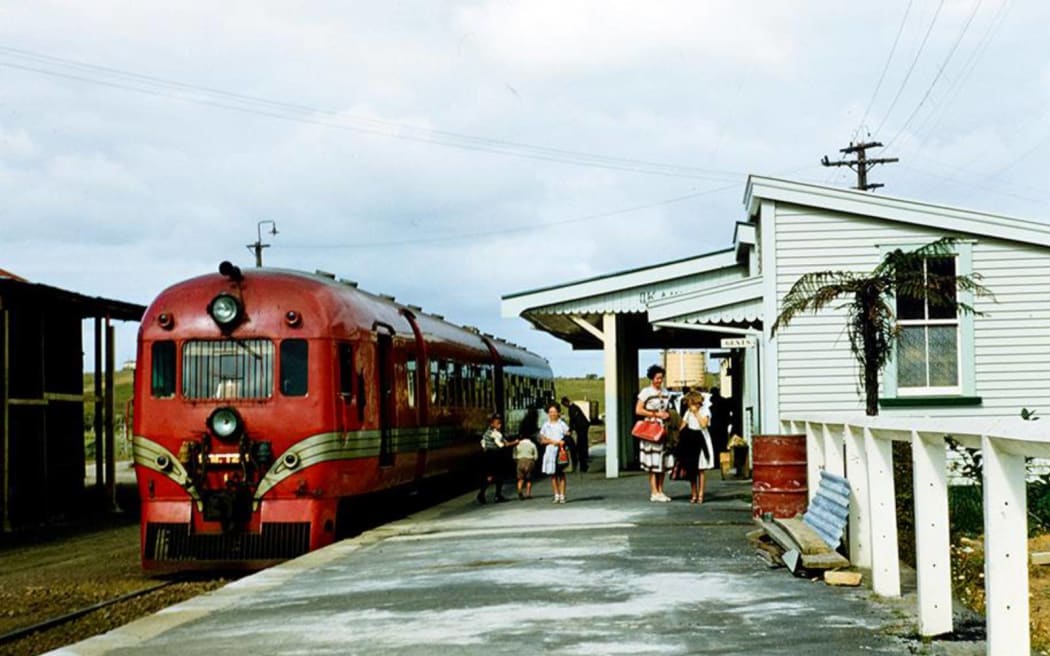
Ōkaihau Railway Station in its 1950s heyday with an RM-class railcar and the Clark family on the platform.
Photo: Ron Clark / 1207-1635, Sir George Grey Special Collection, Auckland Library
Plans to celebrate the 100th anniversary of New Zealand’s northernmost railway are picking up steam in a small Northland town.
Little remains of the Ōkaihau Branch Railway, but its construction helped create present-day Ōkaihau, a town about 15km north of Kaikohe, and its route forms a key part of the Twin Coast Cycle Trail.
In recent months, as the anniversary nears, Ōkaihau residents have been collecting memories of the historic railway before they are lost forever.
The remains of a railcar workshop have been unearthed and they are building a “storyboard shelter” beside the bike trail to display the tales they have uncovered.
Local resident Noeline Inverarity said Ōkaihau Railway Station was the northernmost railhead in the country when it opened on 29 October, 1923.
As a trustee of the Twin Coast Cycle Trail, Inverarity said she was keen to share the area’s many untold stories with visitors riding the 86km route from the Bay of Islands to the Hokianga Harbour.
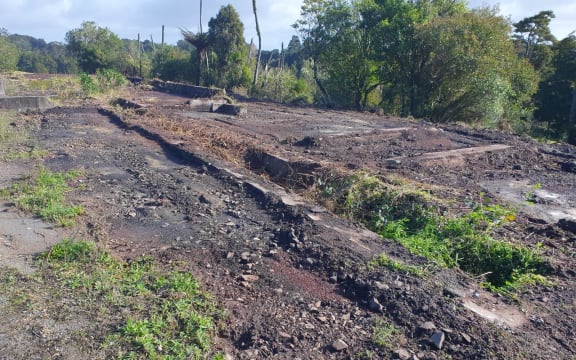
The foundations of the former Ōkaihau rail car workshop have been unearthed by the Twin Coast Cycle Trail Trust.
Photo: Supplied
“With the section of trail from Ōkaihau to Utakura, the obvious story to tell is the Ōkaihau railway because it was the most northern railhead in New Zealand, which is quite significant, and it also helped shape the township of Ōkaihau back in the day.”
During an unsuccessful bid to extend the railway further north, the Public Works Department had eight camps in the area housing as many as 600 workers. That influx of workers laid the foundations for modern-day Ōkaihau, Inverarity said.
“Some of those men were married with families so a lot of schools popped up in the area, and a lot of churches and a lot of businesses. It was a huge set-up with 35 trucks a day carting in goods. It’s a shame it’s all gone now but we want to bring some of that memory back.”
While the cycle trail provided the initial inspiration for recording the town’s railway history, the looming anniversary – and the risk of losing some of the stories forever – gave the project an extra push.
The town’s last stationmaster died just a few months ago, Inverarity said.
“A lot of other people who worked on the railway have passed away so we’re lucky we have one who still lives here, Jack Winwood, and he’s been really helpful with identifying structures for us and telling us lots of stories.”
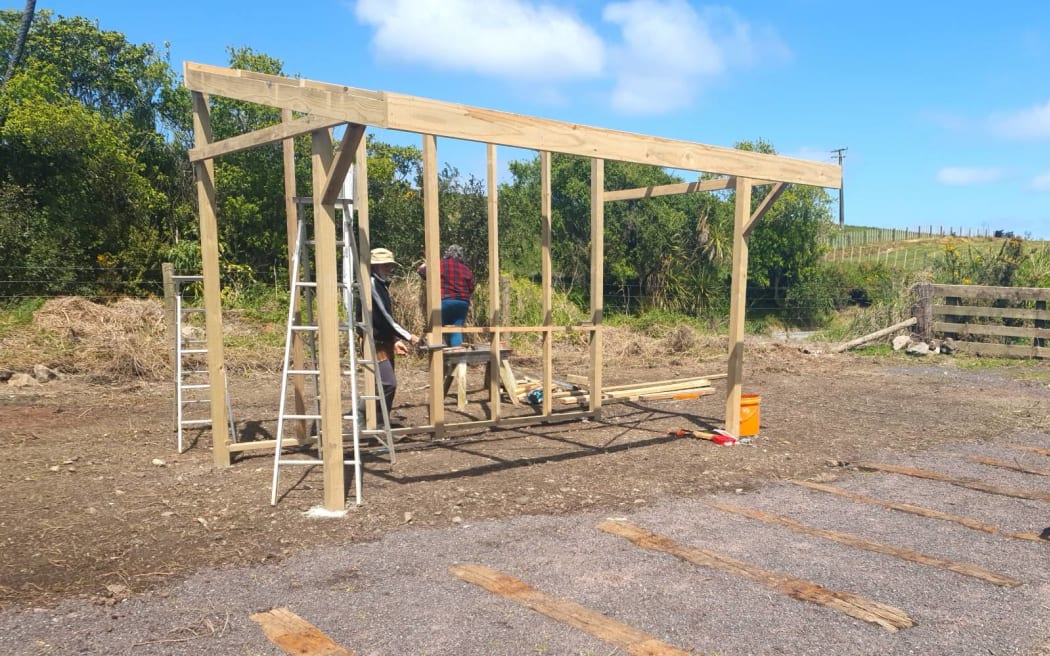
A ‘storyboard shelter’ under construction at the site of the old rail car workshop in Ōkaihau.
Photo: Supplied
Inverarity, also a member of the Ōkaihau Community Association, said the town was “a little off the beaten track” and rarely visited except by riders using the cycle trail.
“It’s a close-knit community where everybody looks out for each other. We still have two sizeable schools and all those old community groups like the gardening club, the Lions, the bowling club… people are still very much connected.”
After a formal opening of the storyboard shelter on Sunday morning, locals will head to Two Ponga Park – next to the nation’s northernmost rail tunnel – for a celebratory picnic.
The commemorations were jointly organised by the community association and the Pou Herenga Tai Twin Coast Cycle Trail Trust.
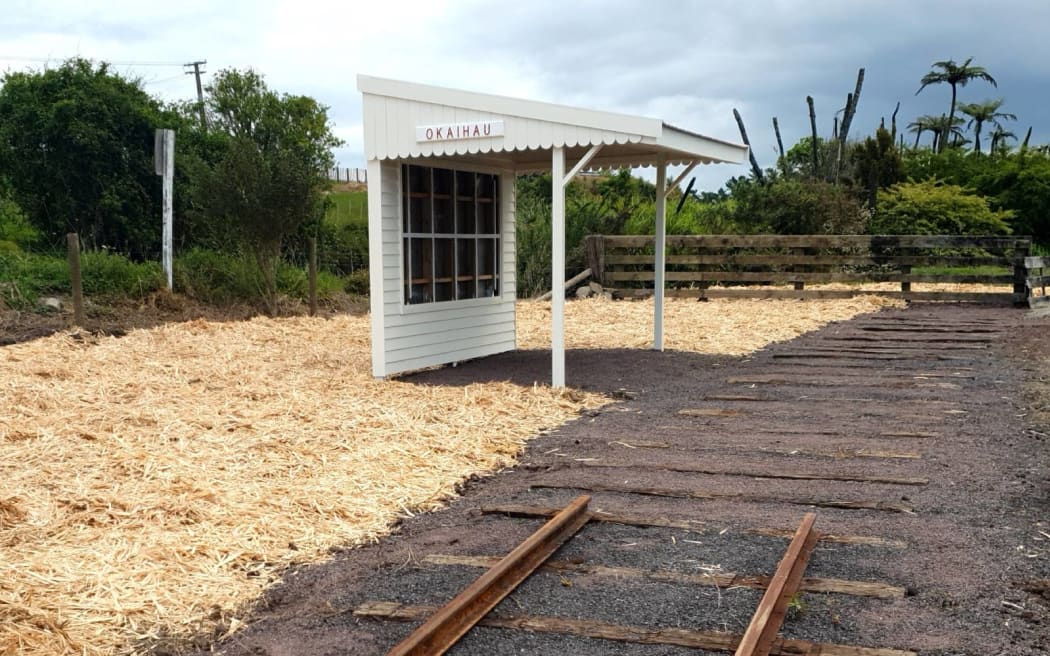
The storyboard shelter is modelled on the old Ōkaihau Railway Station veranda.
Photo: Supplied
History of the Ōkaihau Branch Railway
The 40km-long Ōkaihau Branch Railway was an extension of the North Auckland Line, which ran from Westfield Junction in Auckland to Ōtiria, west of Kawakawa. (The North Auckland Line is currently mothballed beyond the dairy factory at Kauri, just north of Whangārei.)
From Ōtiria, the Ōpua Branch Railway – the North Island’s oldest – ran east to the Bay of Islands’ main port, while the Ōkaihau Branch Railway headed northwest to Kaikohe and finally to Ōkaihau.
Starting work in Ōtiria in 1910, track-builders reached Kaikohe in 1914. World War I put a stop to construction so it was another nine years before locomotives finally steamed into Ōkaihau.
The Ōkaihau Branch Railway had its heyday in the 1950s, an era captured in the song The Okaihau Express by folk musician Peter Cape, better known for that other railway-themed classic, Taumarunui on the Main Trunk Line.
At the time the famously unhurried Ōkaihau train consisted of a steam engine, a carriage and a guard van.
Patronage was boosted in 1956 by the introduction of 88-seater railcars, but they were withdrawn in 1967 due to ongoing mechanical troubles.
The railway reverted to older, and slower, trains carrying a mix of freight and passengers. Demand dropped steadily as a result and the last passenger train ran in 1976.
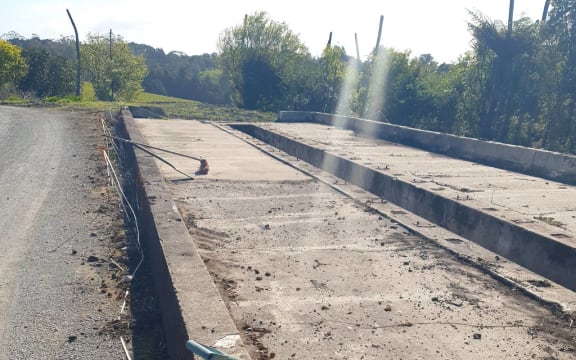
Foundations of the former Ōkaihau rail car workshop, prior to excavation by the Twin Coast Cycle Trail Trust.
Photo: Supplied
A year later, the freight service lost most of its customers when restrictions on road transport were lifted. The last scheduled freight train ran in 1983.
The line was closed in 1987 and the tracks were mostly pulled up, though the Railways Corporation and its successor organisations continue to own the corridor.
Pou Herenga Tai Twin Coast Cycle Trail mostly follows the route of the former Ōkaihau Branch Railway. Notable remnants include two spectacular truss bridges in the Ngapipito Valley west of Moerewa and a curved rail tunnel built in 1916 north of Kaikohe.
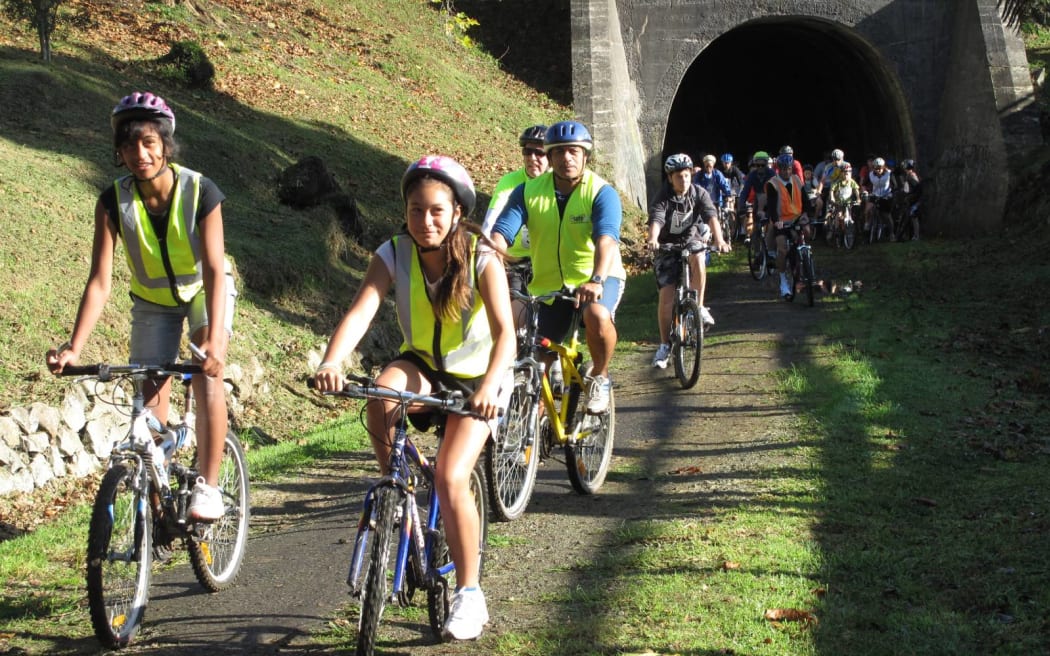
New Zealand’s northernmost rail tunnel, seen here when the first section of the Twin Coast Cycle Trail opened in 2011, passes under Ōkaihau’s main street.
Photo: Peter de Graaf / RNZ
Kaitāia’s ghost railway
Originally the Ōkaihau Branch Railway was to have continued all the way north to Kaitāia, creating a genuinely nationwide rail network from one end of New Zealand to the other.
Historical accounts show debate raged over the best route north beyond Ōkaihau. Opinion was divided between building the railway over, and through, the Maungataniwha Ranges, where State Highway 1 is currently closed by slips, and the longer but less challenging route around the west of the ranges.
By 1935 the railway line had only advanced another 20km to Rangiahua, at the eastern reaches of Hokianga Harbour, when a new government deemed the project no longer viable.
Although completed, the railway line from Ōkaihau to Rangiahua was steep, slip-prone and never used. The tracks were pulled up and re-used on the west coast near Dargaville.
Today’s State Highway 1 more or less follows the route of the abandoned railway.
Motorists heading north from Ōkaihau can see New Zealand’s northernmost rail tunnel under the town’s main street, and near the Horeke turnoff, the highway passes between the platforms of a never-used railway station.



